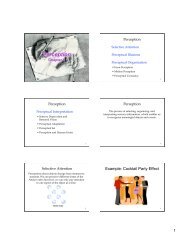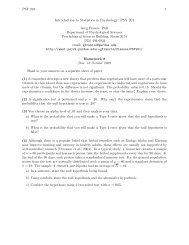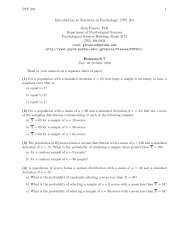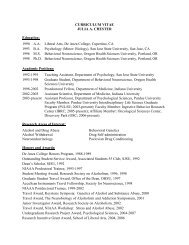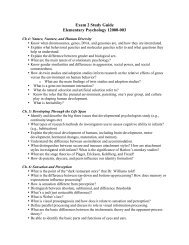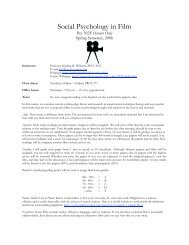Sensation & Perception
Sensation & Perception
Sensation & Perception
Create successful ePaper yourself
Turn your PDF publications into a flip-book with our unique Google optimized e-Paper software.
Psychophysics<br />
A study of the relationship between physical<br />
characteristics of stimuli and our psychological<br />
experience with them.<br />
No<br />
Physical World<br />
Psychological<br />
World<br />
Light Brightness<br />
Sound Volume<br />
Pressure Weight<br />
Sugar Sweet<br />
Detection<br />
Intensity<br />
No No<br />
Observer’s Response<br />
Absolute<br />
Threshold<br />
Yes<br />
Detected<br />
Yes<br />
13<br />
A relative increase in<br />
mental intensity, Fechner<br />
realized, might be<br />
measured in terms of the<br />
relative increase in<br />
physical energy required<br />
to bring it about.<br />
22 nd October 1850<br />
Thresholds<br />
Gustav Fechner<br />
(1801-1887)<br />
Absolute Threshold: Minimum stimulation needed for<br />
an individual to detect a particular stimulus 50% of the<br />
time.<br />
Tell when you (the observer) detect the light. 15<br />
0 5 10 15 20 25<br />
16<br />
Stimulus Intensity (lumens)<br />
Subliminal Threshold: When<br />
stimuli are below one’s<br />
absolute threshold for<br />
conscious awareness.<br />
Subliminal Threshold<br />
Kurt Scholz/ Superstock<br />
17<br />
Proportion of “Yes” Responses<br />
0.00 0.50 1.00<br />
Difference Threshold<br />
Difference Threshold: Minimum difference between two<br />
stimuli required for detection 50% of the time, also called<br />
just noticeable difference (JND).<br />
No<br />
Difference<br />
Threshold<br />
No Yes<br />
Observer’s Response<br />
Tell when you (observer) detect a difference in the light.<br />
14<br />
18<br />
3



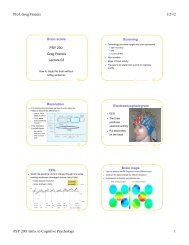
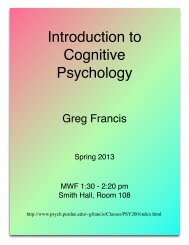
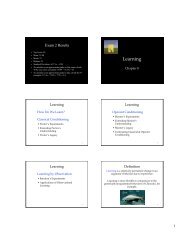
![Exam 4 Study Guide[1]](https://img.yumpu.com/45196739/1/190x245/exam-4-study-guide1.jpg?quality=85)
